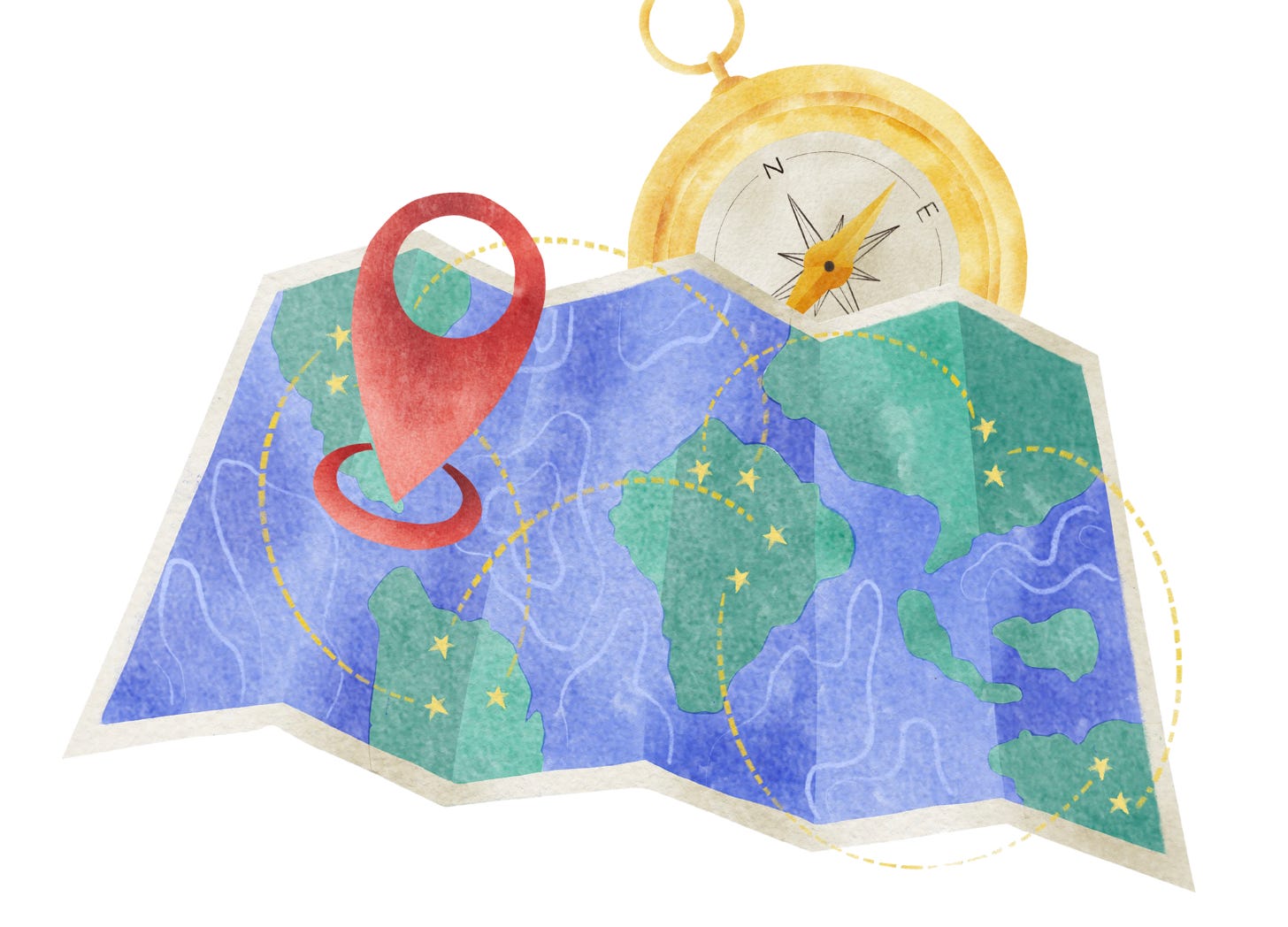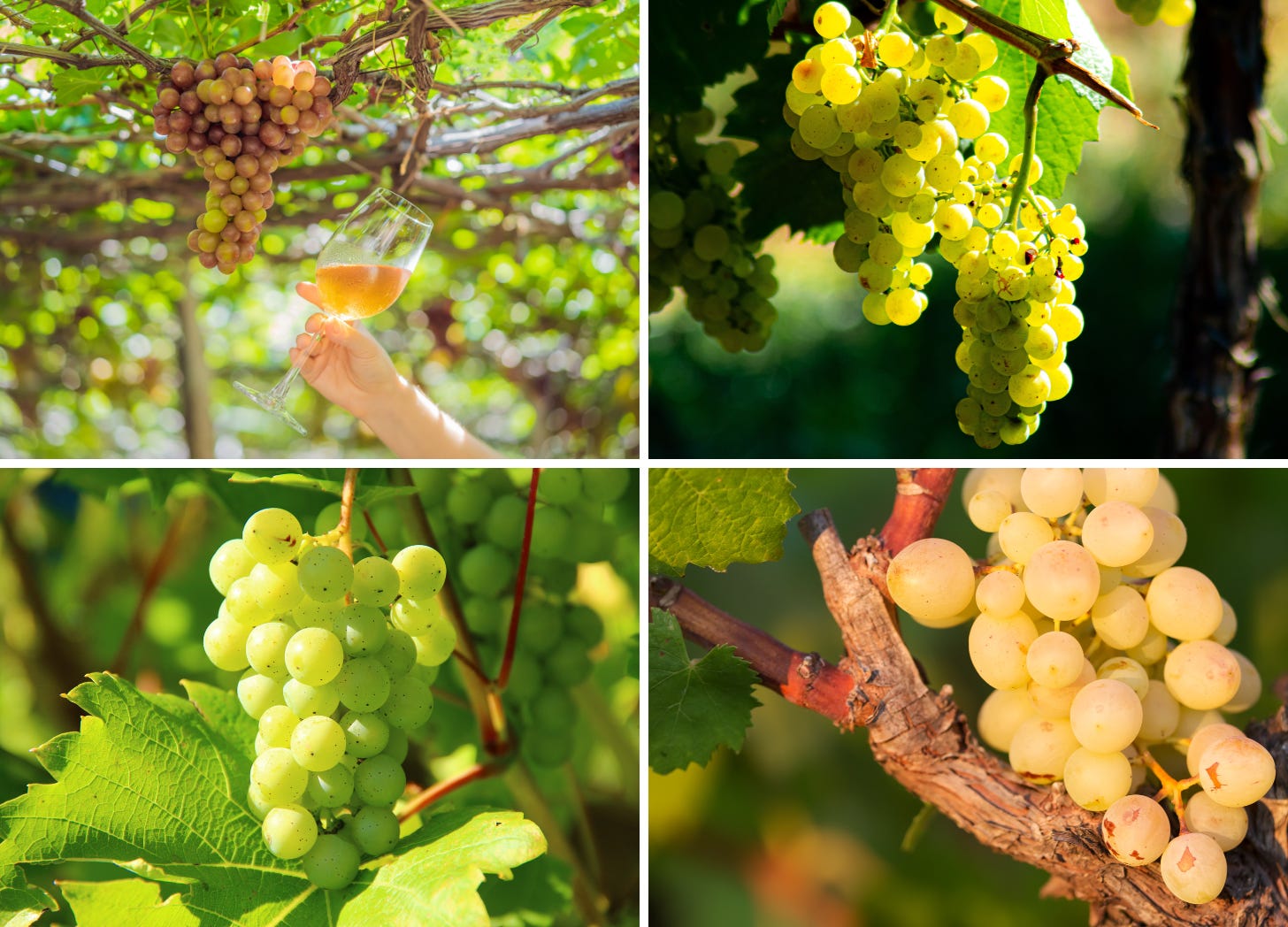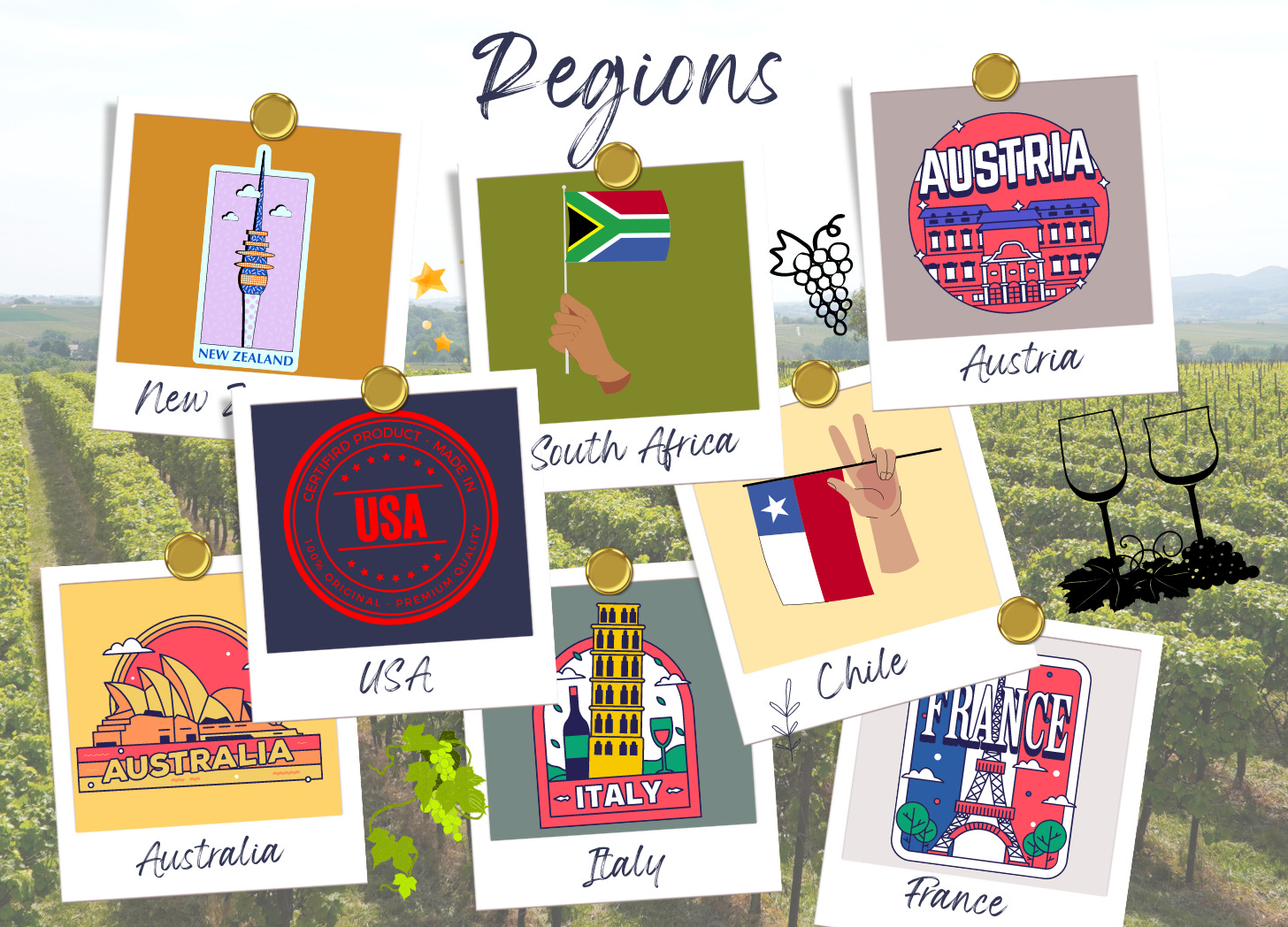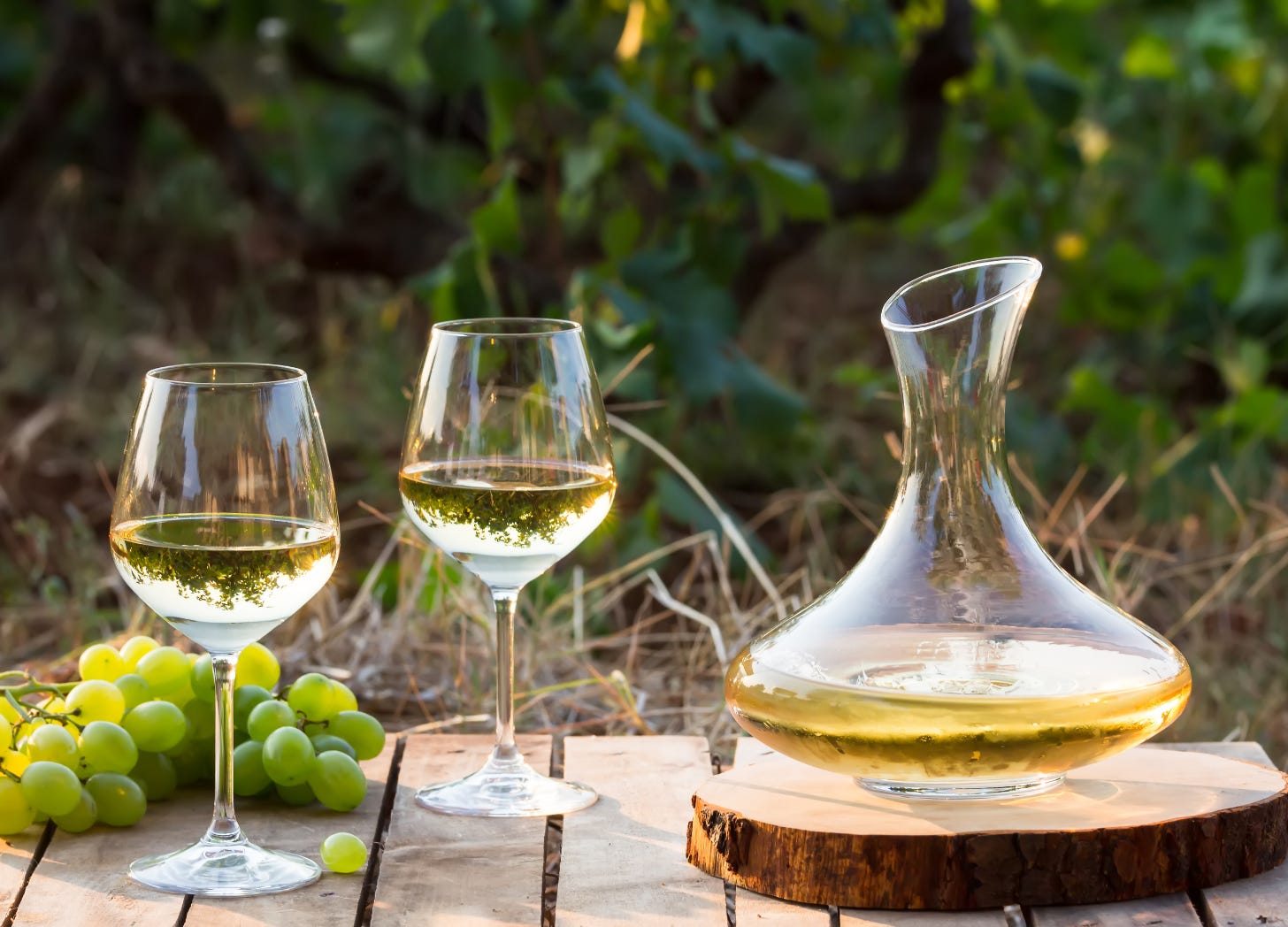Choose Your Wine Adventure: Sauvignon Blanc
Whether you love it, or love to hate it, it is all over the place (literally)
We're on our first official stop of our wine adventure—Sauvignon Blanc! Whether you love it, or love to hate it, it's all over the place (literally). Here we'll give you the rundown on one of the world’s most popular grapes.
Profile
Sauvignon Blanc is an aromatic, high-acid grape that classically has notes of grass, citrus, gooseberry*, bell pepper, pears, white flowers, and tropical fruits, depending on the climate. You’ll most often see it as a varietal wine (meaning it’s not blended with other grapes) in a fresh, unoaked style that’s meant to be drunk young, making it a popular choice in summer. However, it can be blended (most famously with Sémillon in Bordeaux), it can be oaked, and it can be aged—it all depends on the region and the style desired by the winemaker. Which brings us to…
Style
You’ll most often see Sauvignon Blanc as a dry still white wine, of which the main styles are…
Loire Style
The Loire Valley in France is a colder climate region, so typically this region produces crisp and lean Sauvignon Blancs with higher acid and greener aromas, such as grass, apple, and gooseberry. These are lighter bodied and lower in alcohol, often with notable minerality. Sancerre and Pouilly-Fumé are the most well-known Sauvignon Blancs from the Loire Valley
New Zealand-Style
The New Zealand-style Sauvignon Blancs are highly aromatic, with more floral and tropical fruit notes. These wines are bigger and bolder, but Sauvignon Blanc’s high acid keeps them fresh. The Marlborough region of New Zealand is known for pioneering this style, which rose to popularity in the 1980s.
California’s Fumé-Blanc Style
While you can find all kinds of Sauvignon Blanc California, one notable style was from Robert Mondavi, who coined “Fumé-Blanc” in 1968 for his oak-aged Sauvignon Blanc. The name was an homage to the smokier wines of Pouilly-Fumé, and indicated that these wines were less fruit-driven than what constituted much of the California Sauvignon Blancs of the day. Fumé-Blanc didn’t stay bound to California, though, and these days you might see Fumé-Blanc from Australia, for example, or anywhere that wants to indicate that they’re making an oakier, smokier Sauvignon Blanc.
But wait! There’s also…
Styria (Steiermark) Style
This one’s a little more under-the-radar, but the Styria region in Southern Austria is also well-known for their wines in general, and Sauvignon in particular. They tend to be richer than Loire-style wines, but not as boldly fruity as New Zealand-style, although as always, diversity abounds. If you like Sauvignon Blanc, then we encourage you to explore this area.
Other Styles
Sauvignon Blanc can also be made into sparkling wines, orange wines, and dessert wines, or as part of a blend in a totally different style than we listed here. As is typical in wine—you can probably find pretty much everything if you look for it.
Common Blending Partners
Because Sauvignon Blanc has a strong personality, as well as international caché, it is often made into varietal wines. However, its most well-known blending partner is Sémillon in White Bordeaux (along with lesser-known grapes such as Muscadelle, Colombard and Ugni Blanc). But it can also be blended with anything—this is especially true in the New World, where there are less rigid rules about what’s allowed in wines that are marked from a certain region.
By any other name
Sauvignon Blanc is called many things in many places. A few of its more common aliases are Blanc Fumé (The Loire), Fié/Fiers, Fumé, Fumé-Blanc (California), and Muskat-Silvaner (Austria, Germany).
All in the Family
Sauvignon Blanc and Cabernet Franc are the parent grapes of Cabernet Sauvignon. It’s a child of Jura’s Savagnin, and a doppelganger of—though unrelated to—Sauvignonasse. It’s a clonal sibling of Sauvignon gris.
Where in the world is Sauvignon Blanc?
Sauvignon Blanc is what’s known as an “international varietal”, so you’ll find it almost everywhere that grapes are grown. However, for the most well-known regions, we have:
France (The Loire Valley, Bordeaux)
Italy (Piedmont, Alto Adige)
Austria (Styria/Steiermark)
New Zealand (Marlborough)
Australia (Adelaide Hills, Margaret River)
USA (California’s Central Coast)
Chile (San Antonio Valley,Casablanca Valley)
South Africa (Stellenbosch, Elim)
How to Buy It
Pick a Style
The first step is to know what type of Sauvignon Blanc you’re after—more Loire, more New Zealand, or something else? That’ll help guide you to the right bottle. More established regions may have more options at a variety of price points—though some regions (we’re looking at you, Sancerre) are always kind of pricey. (If you want that Sancerre style without that Sancerre price tag, look for wines from Touraine—that’s the appellation near Sancerre and Pouilly-Fumé).
Don’t be shy
But, as wine professionals ourselves, we encourage you to find a wine shop convenient to you where you can talk to the people that work there. Any wine shop worth its wine crystals has employees that are educated about their wines and excited to find a bottle that works for you.
Check the alcohol content
One note regardless of the style you’re seeking is that Sauvignon Blanc is a cooler-climate grape—when grown in too warm of a climate, it loses its acid and can develop a sort of oily taste. This is why you don’t see it from the south of France, for example. If a Sauvignon Blanc is higher in alcohol (>14%), it may indicate that the grapes got too ripe and thus it has lost some of its charm. We recommend you stick in the medium alcohol range of 11-13%.
How to Serve It
For fresh and bright styles, serve well-chilled, at roughly 45 - 50° F (7 - 10° C).
For richer styles, serve just above a chill, at about 50 - 55° F (10 - 13° C).
Some producers and wines we like
Erica’s recent favorite Sauvignon Blancs:
JB Neufeld in Yakima Valley, Washington—loved the Sauvignon Blanc Pét-Nat.
Peter Michael in Napa Valley—would definitely buy L’Aprés Midi for a special occasion.
Dragonette Cellars on California’s Central Coast—still dreaming of their Grassini Sauvignon Blanc.
Jean-Francois Mérieau in Touraine—reliably delicious, especially with some age.
Merry Edwards in Sonoma’s Russian River Valley and her Late Harvest Sauvignon Blanc—a total elixir.
What are Jaime’s favorite Sauvignon Blancs? Trick question! Unlike Erica, who is an acid-hound, Jaime doesn’t like high-acid wines, so she’s never really liked Sauvignon Blanc all that much.
If you love it, try…
Verdelho, Albariño, and Vermentino—these are on the same drive of crisp, high-acid wines. We’ll profile those in future posts.
And that kicks off the first stop on our wine adventure—thanks for coming along! Please enjoy your layover before the next destination…
TLDR: Sauvignon Blanc is usually a bright, refreshing, aromatic, early-drinking wine that’s grown all over the world.
*An important note on a common point of confusion: The gooseberry we are talking about here is the green gooseberry in the Ribus genus (which is the same genus as currants). These gooseberries look like little striped green water balloons. These are not the Cape gooseberry, which are orange and have papery husks—those ones are in the genus Physalis, which is the same as that of the tomatillo (you can see the relation). Those little orange guys are delicious, but not what we’re talking about here. Unfortunately green gooseberries can be a bit hard to find in the US because they are a vector for a disease affecting white pines and thus were federally banned in the early 1900s. Now, the restrictions are state-by-state so you can find them sometimes, depending on where you live. If you do see them, grab them with both hands! They’re one of my (Erica’s) favorites.









